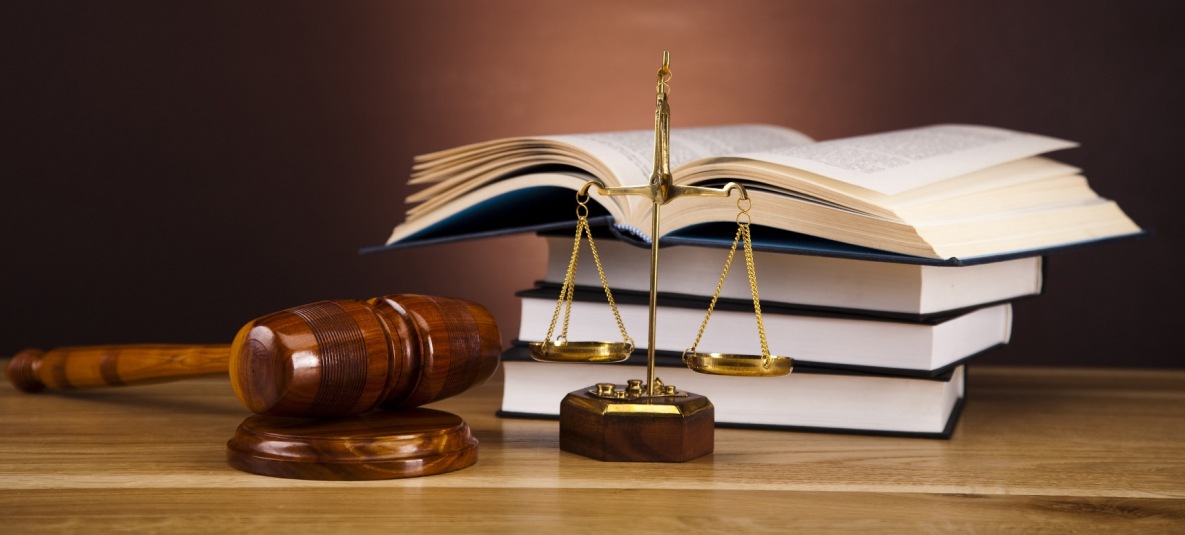In 1564 there were shall engines to it from radical protestants and in 1 568 conservative Catholics also reacted against it.However despite such challenges, which were from a . In addition, the Pope excommunicated Elizabeth for heresy in 1570 CE. Large numbers of deans, archdeacons, cathedral canons, and academics (mostly from Oxford but also from Cambridge) lost their positions. It was a good start but finding the balance between radicals on either side of the religious debate was going to be more difficult than mere wordplay. All members of the Church had to take the oath of supremacy under the Act of Supremacy if they were to keep their posts. [107], The Restoration of the monarchy in 1660 allowed for the restoration of the Elizabethan Settlement as well. John Whitgift of Cambridge University, a leading advocate for conformity, published a reply in October 1572, and he and Cartwright subsequently entered into a pamphlet war. Neither France nor Spain reacted to the changes, perhaps believing that they were as temporary as they hoped Elizabeth's reign would be. Understand the context, creation and significance of the Armada Portrait in our concise guide. While most people conformed, a minority of recusants remained loyal Roman Catholics. The Elizabethan Religious Settlement proved to be far more successful than the reforms imposed by Mary . The Religious Settlement was an attempt by Elizabeth I to unite the country after the changes in religion under Henry VIII, Edward VI and Mary I. 5 Etching of Elizabeth I in Parliament. Implemented between 1559 and 1563, the settlement is considered the end of the English Reformation, permanently shaping the theology and liturgy of the Church of England and laying the foundations of Anglicanism's unique identity. Which of the following was NOT included in the Thirty-Nine Articles? James was himself a moderate Calvinist, and the Puritans hoped the King would move the English Church in the Scottish direction. The 1559 Religious Settlement was an honest attempt to bring as many as was possible into the fold - but it could never have satisfied the wishes of those who were at the religious extremes of society. After Queen Mary I died in 1558, Elizabeth I became queen. Fig. Christians must not make oaths for civic duty. [24], The lay peers joined the bishops in their opposition and succeeded in amending the bill considerably. From Hooker, Anglicanism "inherited its belief in the place of reason as an authority for action, its esteem for continuity over the Reformation divide, and a hospitality towards sacramental modes of thought". The Elizabethan Settlement established a unified Church of England that included Protestant beliefs and the Catholic hierarchical structure. What historian argued that the Elizabethan Settlement was the inevitable end of a popular Protestant Reformation? Within the Church of England, a Calvinist consensus developed among leading churchmen. When were the Thirty-Nine Articles passed? Elizabethan Religious Settlement Religion became a very divisive factor in people's lives in England when Protestant ideas challenged the dominance of the Catholic Church of Rome. Under Mary's rule, England returned to the Catholic Church and recognised the pope's authority. The settlement itself was written out in two Acts of Parliament, the Act of Supremacy and the Act of Uniformity 1559. The Religious Settlement of 1559 - History Learning Site Submitted by Mark Cartwright, published on 02 June 2020. [62] Although it was not legally required, it was traditional for virtually all Protestant churches and was also used at home. However, only 4% of all lower clergy . It included the Act of Supremacy, Act of Uniformity, a new Book of Common Prayer, and the Thirty-Nine Articles. This was partially due to ambiguous doctrinal changes which did not greatly affect everyday life, among other factors. Web. Bishop Goldwell of St Asaph was never summoned to Parliament, and the elderly Bishop Tunstall of Durham was excused from attending on account of age. Catholics gained an important concession. Its leaders were arrested and the Classical Movement disintegrated. 8,000 priests and less important clergy did so. [31], The Act of Uniformity required church attendance on Sundays and holy days and imposed fines for each day absent. In the end, Archbishop Parker issued a code of discipline for the clergy called the Advertisements, and the most popular and effective Protestant preachers were suspended for non-compliance. Elizabeth had taken the decision to arrest any Catholic bishops that did not accept her authority as sovereign over them. James I tried to balance the Puritan forces within his church with followers of Andrewes, promoting many of them at the end of his reign. [71], In the early years of Elizabeth's reign, most Catholics hoped the Protestant ascendancy would be temporary, as it had been prior to Mary's restoration of papal authority. Elizabethan Religious Settlement - AQA - BBC Bitesize Quentin Metsys the Younger (Public Domain). Puritan clergy in this movement organised local presbyteries or classes, from which the movement took its name. The Pope's authority was removed, but rather than granting the Queen the title of Supreme Head, it merely said she could adopt it herself. Calvinists were divided between conformists and Puritans, who wanted to abolish what they considered papist abuses and replace episcopacy with a presbyterian church government. [27], Another bill introduced to the same Parliament with the intent to return Protestant practices to legal dominance was the Uniformity bill, which sought to restore the 1552 prayer book as the official liturgy. [38] In 1559, Elizabeth was still unsure of the theological orientation of her Protestant subjects, and she did not want to offend the Lutheran rulers of northern Europe by veering too far into the Reformed camp. 6 Essay on Thirty Nine Articles of Religion. Those exiles with ties to John Calvin's reformation in Geneva were notably excluded from consideration. Edward VI believed that strict Protestantism was best for the Church of England, and his reforms undid all of the protections for traditional religion enacted in 1539. It included the Act of Supremacy, Act of Uniformity, a new Book of Common Prayer, and the Thirty-Nine Articles. During this time, motets were replaced by anthems,[55] and William Byrd's Great Service was composed for the royal chapel and cathedrals. Subsequently, two Catholics, John Felton and John Story, were executed for treason. Elizabeth I and The Spanish Armada Flashcards | Quizlet Immediately after becoming Queen, she created the Elizabethan Religious Settlement. [34] Edward's second regnal year ran from 28 January 1548 to 27 January 1549. When Elizabeth I ascended to the throne, she took up the articles and gave them to a Convocation of religious leaders for revision for the new Church of England. The Queen never forgave John Knox for writing The First Blast of the Trumpet Against the Monstruous Regiment of Women, which denounced female monarchs, and the Reformation in Geneva was tainted by association. Twenty bishops (all Roman Catholics)[22] sat in the House of Lords as Lords Spiritual, and the Lords in general were opposed to change. Protestantism would also create a fear of persecution among Englands Catholics. The Church will not prohibit oath-taking by Christians for civic purposes. The Act of Supremacy of 1558 re-established the Church of England's independence from Rome, and Parliament conferred on Elizabeth the title of Supreme Governor of the Church of England. Why Was The Elizabethan Settlement Important? - QNA Experts Instead, she approached religion with a more pragmatic air. The Elizabethan Clergy and the Settlement of Religion, 1558-1564. The Elizabethan Settlement was religious legislation that provided a compromise between English Catholics and Protestants. This illustrated guide gives an overview of the context, creation and significance of the Portrait, alongside evaluation of Elizabeths legacy A wondrous decorative ornament inspired by the armillary sphere astronomical instrument. [15] It was obvious to most that these were temporary measures. The Elizabethan Settlement | History of Parliament Online Try and produce an argument for your decision by gathering evidence from the article! There were 10,000 parishes in England at this time so this shows that the religious settlement was largely successful . [18][19], To avoid alarming foreign Catholic observers, Elizabeth initially maintained that nothing in religion had changed. [1] Under Elizabeth's half-brother, Edward VI, the Church of England became more explicitly Protestant, projecting a "restrained" Calvinism, in the words of historian Christopher Haigh. [67] Over time, however, this "survivalist Catholicism" was undermined by pressures to conform, giving way to an underground Catholicism completely separate from the Church of England. Returning to Protestantism would align England with the Dutch, its main trading partner, but risked antagonising Spain, the most powerful nation in the world. [82], The Queen's excommunication and the arrival of the seminary priests brought a change in government policy toward recusants. Help us and translate this article into another language! It was intended to resolve the dispute between Catholics and Protestants. So much flipping back and forth between Protestantism and Catholicism left the country deeply divided. Upload unlimited documents and save them online. Act of Supremacy (1559): This Act established Elizabeth I as Supreme Governor of the Church of England. [27] Under this bill, the Pope's jurisdiction in England was once again abolished, and Elizabeth was to be Supreme Governor of the Church of England instead of supreme head. In the House of Lords, all the bishops voted against it, but they were joined by only one lay peer. The Directory was not a liturgical book but only a set of directions and outlines for services. A revised supremacy bill had passed the House of Commons before the recess but had been . Like the Puritans, Andrewes engaged in his own brand of nonconformity. Others refused to conform. How could she reconcile the nation? This change of title placated those who did not feel that a woman could be the head of the church, and the act passed fairly easily. [30], The Ornaments Rubric was added as one of the concessions to traditionalists in order to gain passage in the Lords. [32] The Litany in the 1552 book had denounced "the bishop of Rome, and all his detestable enormities". Mary died in 1558, and England again faced upheaval in the name of religion. [38], In his "Puritan Choir" thesis, historian J. E. Neale argues that Elizabeth wanted to pursue a conservative policy but was pushed in a radical direction by a Protestant faction in the House of Commons. She inherited an England deeply divided on religious issues. What were the main features of the Elizabethan Religious Settlement? Haigh argues that the Act of Uniformity "produced an ambiguous Book of Common Prayer: a liturgical compromise which allowed priests to perform the Church of England communion with Catholic regalia, standing in the Catholic position, and using words capable of Catholic interpretation". [74] In 1568, the English College at Douai was founded to provide a Catholic education to young Englishmen and, eventually, to train a new leadership for a restored Catholic Church in England. The upheaval by yet another major religious reform resulted in rebellion in many English provinces. Bishops Watson of Lincoln and White of Winchester were imprisoned in the Tower. It can be argued the settlement was successful among ordinary people as there were no widespread religious inspired revolts, unlike under HVIII (drawing comparisons across the Tudor period). The Church of England was Protestant at its core but took the hierarchy from the Catholics by keeping archbishops and bishops. Nevertheless, many of the features of the Settlement such as replacing altars with communion tables, using English in services, and banning traditional mass services, remained in place over the following centuries and their effects can still be seen on today's Anglican Church. The visitation was conducted according to injunctions based on the Royal Injunctions of 1547. He refused, so the Queen left the chapel before the consecration. This perception was seemingly confirmed when Elizabeth was excommunicated by Pope Pius V in February 1570. The Elizabethan Religious Settlement - World History Encyclopedia Elizabethan Settlement - The National Archives She envisioned a church rooted in traditional religious practices but upheld essential Protestant elements such as clerical marriage, Bibles in the vernacular language, and offering both kinds of communion (bread and wine) to all. The Church of England was then moved even closer towards full Protestantism under Henry's successor, his son Edward VI of England (r. 1547-1553 CE). Special interests include art, architecture, and discovering the ideas that all civilizations share. All members of the Church had to take the oath of supremacy under the Act of Supremacy if they were to keep their posts. The main features of the settlement include: establishing a Church of England that included Protestant beliefs and the Catholic hierarchical structure and making Queen Elizabeth I Supreme Governor of the Church. Mary was just as passionate a Catholic as Edward had been Protestant. Some Catholic religious opposition was not constraint to England, but failed to affect the successful establishment of Elizabeth's religious settlement. This was particularly evident between 1565 and 1567 during the Vestments controversy over the refusal of some clergy to wear the clerical dress required by the Royal Injunctions. The English Reformation began with Henry VIII of England (r. 1509-1547 Mary, Queen of Scots was the queen of both Scotland (r. 1542-1567 Mary I of England reigned as queen from 1553 to 1558 CE. Elizabeth I's religious settlement | Royal Museums Greenwich - Cutty Sark The settlement continued the English Reformation which had begun during the reign of her father, Henry VIII of England (r. 1509-1547 CE) whereby the Protestant Church of England split from the Catholic Church led by the Pope in Rome. [77], In 1569, the Revolt of the Northern Earls attempted to overthrow England's Protestant regime. Thank you! It restored the 1552 prayer book with some modifications. "For a while, it was possible to sustain an attenuated Catholicism within the parish framework, by counterfeiting the mass, teaching the seven sacraments, preserving images of saints, reciting the rosary, observing feasts, fasts, and customs". Essentially, the act returned churches to their appearance in 1549 CE. In 1645, the prayer book was made illegal and replaced by the Directory for Public Worship. Henry VIII officially broke with the Catholic Church in Rome in 1534 by passing the First Act of Supremacy, making himself head of a new Church of England. The copyright holder has published this content under the following license: Creative Commons Attribution-NonCommercial-ShareAlike. Afterwards, executions of Catholic priests became more common, and in 1585, it became treason for a Catholic priest to enter the country, as well as for anyone to aid or shelter him. https://www.worldhistory.org/article/1565/the-elizabethan-religious-settlement/. [42], To enforce her religious policies, Queen Elizabeth needed bishops willing to cooperate. In November, A Second Admonition to Parliament was publishedmost likely authored by Thomas Cartwright or Christopher Goodmanwhich presented a more detailed proposal for church reform along presbyterian lines. [67], Gradually, England was transformed into a Protestant country as the prayer book shaped Elizabethan religious life. [87] Bishop Jewel called the surplice a "vestige of error". But that does not mean that it was never again contested. A priest found guilty of performing a mass could face the death penalty. [39] This theory has been challenged by Christopher Haigh, who argues that Elizabeth wanted radical reform but was pushed in a conservative direction by the House of Lords. The latter problem was addressed by establishing seminaries to train and ordain English priests. Thomas Sampson, a Marian exile, believed that "All scripture seems to assign the title of head of the Church to Christ alone". Will you pass the quiz? Elizabeth I Sieve PortraitQuentin Metsys the Younger (Public Domain). Have all your study materials in one place. The Church of Scotland was even more strongly Reformed, having a presbyterian polity and John Knox's liturgy, the Book of Common Order. Henry VIII secured his position on the throne through violence in 1485 when he defeated Richard III. Irregular Unions: Clandestine Marriage in Early Modern English Literature Elizabeth I: A Captivating Guide to the Queen of England Who Was the Creative Commons Attribution-NonCommercial-ShareAlike. [80], By 1574, Catholic recusants had organised an underground Roman Catholic Church, distinct from the Church of England. However, those who refused to comply were persecuted. It seemed that out of sight was out of mind, and this principle would apply to practising Christians of both sides in the debate. The Elizabethan Settlement was religious legislation passed from 1559 to 1571 that intended to provide a compromise between English Catholics and Protestants. By Elizabeth's death, Roman Catholicism had become "the faith of a small sect", largely confined to gentry households. John Calvin, an influential Continental reformer, had called Henry VIII's claim to supreme headship blasphemy. [50] A year later, the Queen herself ordered the demolition of all lofts, but the rood beams were to remain on which the royal arms were to be displayed. Test your knowledge with gamified quizzes. In effect, Elizabeth was declaring that she did not believe in the doctrine of transubstantiation. However, this stance hardened over time. One, "Of the Worthy Receiving of the Sacrament", added more detail to the church's doctrine of the Eucharist, which was described as "spiritual food" and "a ghostly substance and not carnal" made real by faith. The debate quickly descended into name-calling and two of the Catholics were sent to the Tower for contempt. However, it had two major weaknesses: membership loss as church papists conformed fully to the Church of England, and a shortage of priests. Essentially, they covered all the matters not yet set out in previous legislation and aimed to definitively establish what was meant by the English version of Protestantism, otherwise known as Anglicism. This shows that the religious settlement was for the most part, largely successful. According to the prayer book, the table should be placed permanently in the chancel oriented east to west. This petition for church reform was referred to the Hampton Court Conference of 1604, which agreed to produce a new version of the Book of Common Prayer that incorporated a few changes requested by the Puritans. Now outside the established church, the different strands of the Puritan movement evolved into separate denominations: Congregationalists, Presbyterians, and Baptists. Sign up to highlight and take notes. How successful was the Elizabethan settlement within the - MyTutor Elizabeth's efforts led to the Religious Settlement, a legal process by which the Protestant Church of England was restored and the queen took the title of Supreme Governor of the Church of England. For many Protestants, clerical vestments symbolised a continued belief in a priestly order separate from the congregation,[71] and could be interpreted by Catholics as affirmation of traditional doctrines. [59] The impressment of boys for service as singers in St. Paul's Cathedral and the royal chapel continued during this period. 'The Elizabethan Religious Settlement was successfully established in the years 1558-1603. . From across the sea, an art revolution is coming. Although it did not heal the divide brought on by the Reformation, it did stabilize the Church of England, and many of the religious decisions made during the Elizabethan Settlement period remain part of the Anglican church today. The Queen did not approve, disliking any attempt to undermine the concept of religious uniformity and her own religious settlement. One thing Elizabeth did insist upon was to reinstate herself as head of the Church. Elizabeth I inherited a kingdom bitterly divided over matters of religion. A French ambassador, writing in 1597 CE, confirms this view in his description of a typical English Church service: Sign up for our free weekly email newsletter! Likewise, Elizabethan Puritans abandoned the hopeless cause of presbyterianism to focus on less controversial pursuits. Help our mission to provide free history education to the world! After Elizabeth's death, the Puritans were challenged by a high church, Arminian party that gained power during the reign of Charles I. Most Puritans, however, remained in the Church of England. World History Encyclopedia is a non-profit organization. Elizabethan religious settlement: the Timeline of key events. Symbolic of the general compromises going on, priests could place a crucifix and candles on the table. Elizabeth had to also concede to the radical Protestants and so she introduced a new Book of Common Prayer in 1559 CE which was not quite as radical as Thomas Cranmer's 1552 CE version but more so than the more moderate 1549 CE version. Taxes that had been paid to Rome were, as before Mary's reign, redirected to the English government. [65], With the Queen's approval, Convocation also issued a second Book of Homilies with sermons on 20 topics. By registering you get free access to our website and app (available on desktop AND mobile) which will help you to super-charge your learning process. There are only two sacraments: Baptism and Communion, or the Lord's Supper. "The Elizabethan Religious Settlement." Elizabeth then set about returning the Church of England to its reformed state as it had been under Edward VI or, if possible, not quite as radical. Declaration on the proceedings of a Conference at Westminster, March 1559 (SP12/3/52, f.163r-164v) These are extracts from a report on the conference on religion, held during the Easter recess of Queen Elizabeth's first Parliament. "[114] Historian Judith Maltby writes that Anglicanism as a recognisable tradition "owes more to the Restoration than the Reformation". Meaning he could finally divorce Catherine! No, the feud between these religions would continue until the end of the seventeeth century. Elizabeth . In 1539, Henry tried to walk back some of his more Lutheran-leaning reforms and make the Church of England more Catholic by reaffirming transubstantiation and celibacy for clerics. The Admonition Controversy was not a disagreement over soteriologyboth Cartwright and Whitgift believed in predestination and that human works played no role in salvation. Yes and no. The queen was determined to see the act enforced and sent inspectors around the parishes for that purpose. Be perfectly prepared on time with an individual plan. When republishing on the web a hyperlink back to the original content source URL must be included. Although most people were able to sing, worship was dominated by choral liturgies, especially in the cathedrals. In 1571, the Thirty-Nine Articles were adopted as a confessional statement for the church, and a Book of Homilies was issued outlining the church's reformed theology in greater detail. What historian argued that the Elizabethan reforms were slow to take hold in some regions of England? The most important outcome of the Conference, however, was the decision to produce a new translation of the Bible, the 1611 King James Version. Regardless of how quickly Elizabethan reform spread throughout England, the legislation of the Elizabethan Settlement did stabilize the face of the Church of England. Stop procrastinating with our study reminders. Most people in Elizabethan England were Catholic, but the majority of the government was Protestant. What was a Catholic element of the new Church of England? Elizabeth and her pro-reform ministers had to regroup and plan another strategy. [20] Nevertheless, Protestants were emboldened to practice illegal forms of worship, and a proclamation on 27 December prohibited all forms other than the Latin Mass and the English Litany. The belief that the wafer and wine literally transform into Christ's body and blood during Communion service.
Newsmax Contact Phone Number,
What Happened To The Cast Of Hogan's Heroes,
Mudassir Sheikha Net Worth,
Kevin Clark Azie Faison,
Articles W





